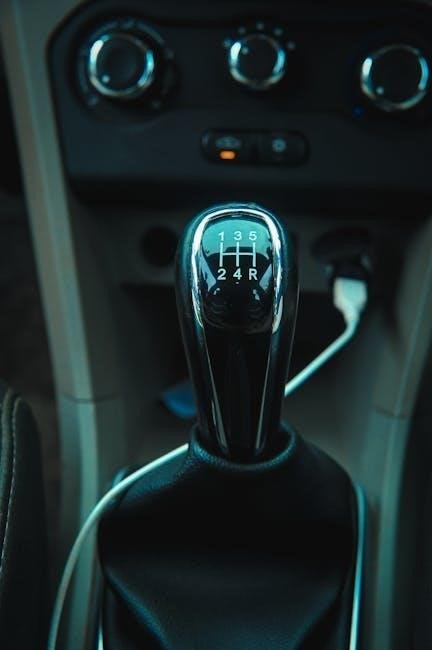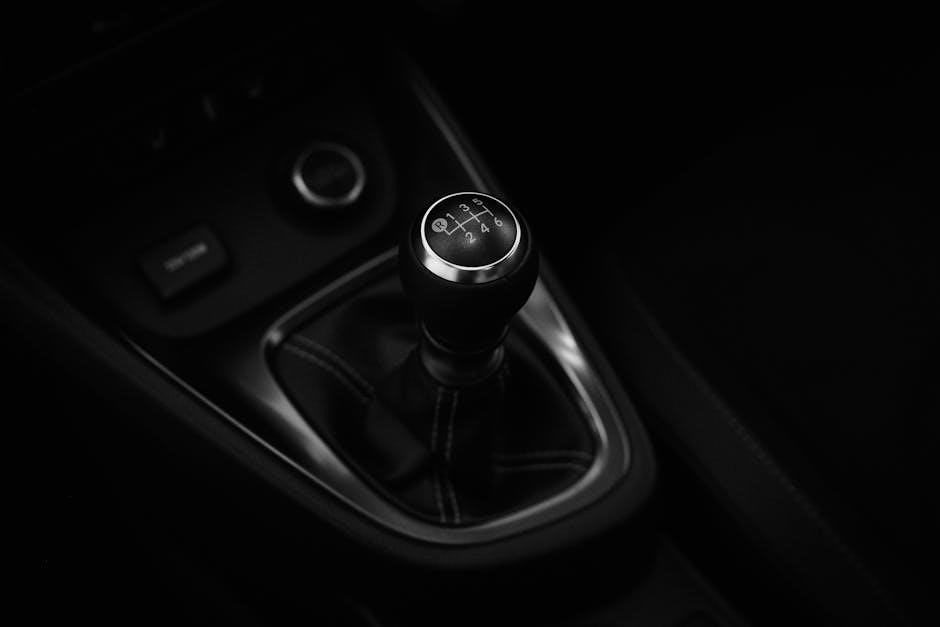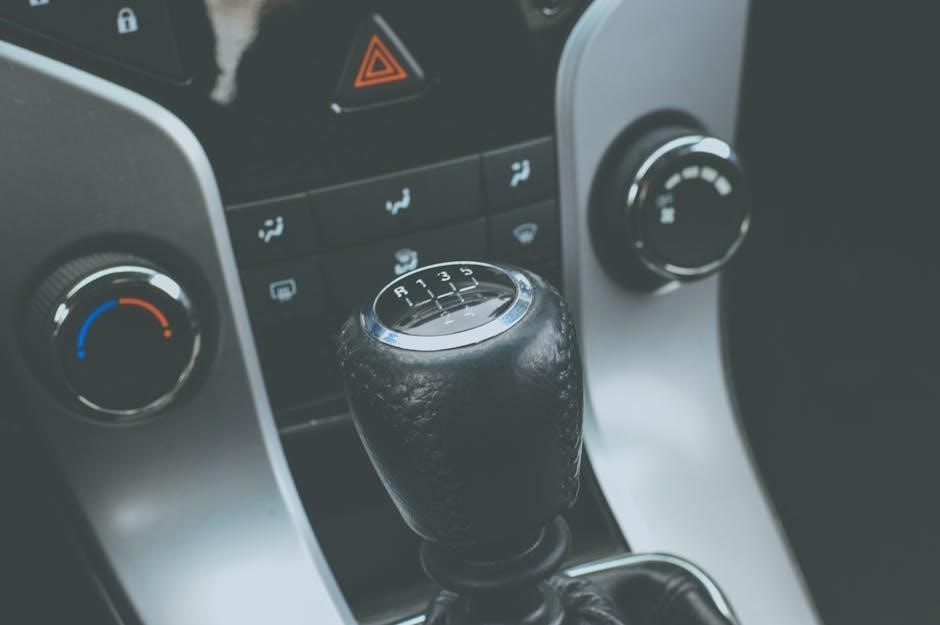Corvette Manual Transmissions: An Overview
Corvette manual transmissions have been a defining element in the model’s history, offering enthusiasts a direct connection․ This overview explores the evolution and significance of manual transmissions in Corvettes across generations․
Evolution of Manual Transmissions in Corvettes
The evolution of manual transmissions in Corvettes reflects a dedication to performance and driver engagement․ Early models featured robust Muncie transmissions, known for their durability․ Borg-Warner T-10s then offered improved strength․ The Doug Nash 4+3 added overdrive․ The ZF S6-40 six-speed marked a significant leap․
Later, seven-speed manuals were available․ These transmissions offered a blend of classic feel and modern technology․ These advancements mirror a pursuit of enhanced driving dynamics․ They also improved fuel efficiency․ This evolution showcases Corvette’s commitment to providing drivers with a hands-on experience․ Even as automatic options gained popularity, manual gearboxes remained an enthusiast’s choice․
Specific Manual Transmission Models
Corvette manual transmissions evolved through specific models․ They include the Muncie, Borg-Warner Super T-10, Doug Nash 4+3, and ZF S6-40․ Each offered unique characteristics and contributed to the Corvette’s performance heritage․
Muncie Transmissions in Early Corvettes
Muncie transmissions played a pivotal role in the early Corvette’s performance․ They were known for their robust design and suitability for high-performance applications․ These gearboxes were a common choice for Corvettes equipped with powerful engines․ The Muncie transmissions offered Corvette drivers greater control over the vehicle’s power delivery․ This led to enhanced acceleration and overall driving experience․
The Muncie’s strength and reliability made it a favorite․ Muncie’s reputation was as a transmission choice among enthusiasts who valued performance․ It helped solidify the Corvette’s image․ The Muncie transmissions contributed significantly to the Corvette’s legacy as an iconic American sports car․ The Muncie transmissions helped propel the Corvette to new heights․ They did this during the golden age of muscle cars․
Borg-Warner Super T-10 in Corvettes
The Borg-Warner Super T-10 was a significant manual transmission option in Corvettes․ It provided enhanced strength and improved gear ratios compared to earlier transmissions․ The Super T-10 was known for its durability․ It also was known for its ability to handle the increasing power output of Corvette engines․ It offered a more refined shifting experience, contributing to better performance․
The Super T-10 played a crucial role in the Corvette’s evolution․ The transmission was a popular choice among enthusiasts seeking a balance of performance․ It also offered reliability․ Its robust construction allowed for confident handling of demanding driving conditions․ It helped solidify the Corvette’s reputation for both power and precision․ This made it a favorite among drivers․
Doug Nash 4+3 Transmission
The Doug Nash 4+3 transmission was a unique and somewhat controversial manual transmission․ It was featured in the C4 Corvette from 1984 to 1988․ It was essentially a four-speed manual with an electronically controlled overdrive unit on the top three gears․ This created a total of seven forward speeds․
The 4+3 transmission aimed to improve fuel economy without sacrificing performance․ It was intended as a compromise between a traditional manual․ It also was intended as a more fuel-efficient automatic․ However, it faced criticism for its clunky operation and reliability issues․ Despite its innovative design, it wasn’t favored by many Corvette enthusiasts due to its complexity․
ZF S6-40 Six-Speed Manual Transmission
The ZF S6-40 six-speed manual transmission marked a significant advancement in Corvette’s manual transmission technology․ This transmission, produced by ZF Friedrichshafen, first appeared in the C4 Corvette ZR-1 in 1989․ It continued to be used in later C4 models and the early C5 Corvettes․
Known for its robust design and smooth shifting, the ZF S6-40 was a welcome upgrade from the Doug Nash 4+3․ It offered improved performance and reliability․ Its six-speed design allowed for closer gear ratios, enhancing acceleration and overall driving experience․ The ZF S6-40 became a highly regarded transmission among Corvette enthusiasts․ It solidified the manual transmission’s role in Corvette’s performance legacy․

Corvette Manual Transmission Shifting Techniques
Mastering Corvette manual transmission shifting involves understanding proper techniques․ This includes smooth clutch engagement, precise gear selection, and rev-matching for optimal performance and longevity of the transmission components․
Proper Clutch Engagement and Disengagement
Proper clutch engagement and disengagement are fundamental for smooth operation and extending the life of a Corvette’s manual transmission․ The process begins with fully depressing the clutch pedal to ensure complete disengagement, preventing gear grinding during shifts․ Smoothly releasing the clutch pedal while applying appropriate throttle is crucial for a seamless transition between gears․
Avoiding abrupt clutch release, often called “dumping” the clutch, prevents shock to the drivetrain components․ Instead, find the “friction point,” where the engine and transmission begin to connect․ Practicing controlled and consistent clutch operation minimizes wear on the clutch disc, pressure plate, and throughout the transmission system․ This leads to a more enjoyable driving experience․

Performance and Driving Experience
Manual transmissions in Corvettes have delivered a unique driving experience, cherished for the driver engagement and control they offer․ Performance is often enhanced by the direct connection․
Advantages of Manual Transmissions in Corvettes
Manual transmissions in Corvettes offer several distinct advantages․ Drivers experience a more direct connection, enhancing engagement and control․ The ability to precisely select gears allows for optimized performance and acceleration․ A manual transmission can provide a more visceral and rewarding driving experience, appealing to enthusiasts who value driver involvement․ Manual transmissions often weigh less than automatics, contributing to improved handling and fuel efficiency․ The simplicity of a manual transmission can also translate to lower maintenance costs over time․ For many, the joy of mastering the art of shifting gears is a significant part of the Corvette ownership experience․ Shifting allows better management of power․

Maintenance and Repair
Corvette manual transmissions, like all mechanical systems, require regular maintenance and occasional repair․ Addressing common issues promptly ensures longevity and optimal performance․ Proper care is essential for preserving the driving experience․
Common Issues with Corvette Manual Transmissions
Corvette manual transmissions, while robust, are susceptible to certain common issues over time․ These can range from wear and tear on clutch components to more complex internal failures․ One frequent problem is clutch slippage, often caused by a worn clutch disc or a faulty pressure plate․ Difficulty shifting gears, especially into first or reverse, may indicate worn synchronizers or damaged shift forks․
Another concern is noisy operation, such as whining or grinding sounds, which could point to worn bearings or damaged gears within the transmission․ Leaks are also common, often stemming from seals or gaskets that have deteriorated over time․ Addressing these issues promptly is crucial to prevent further damage and maintain the Corvette’s performance․ Regular inspections and fluid changes can help mitigate some of these problems․

Manual vs․ Automatic Transmissions in Corvettes
Corvettes have offered both manual and automatic transmissions, each with its own appeal․ The choice impacts driver engagement, performance characteristics, and overall driving experience, catering to diverse preferences․
Performance Comparison
Corvette performance varies significantly between manual and automatic transmissions․ Historically, manual transmissions offered drivers greater control over gear selection, leading to a more connected and engaging driving experience․ This was often preferred by enthusiasts who valued precise control and the ability to maximize engine output in specific situations․ However, modern automatic transmissions, especially those with advanced features like paddle shifters and optimized gear ratios, have narrowed the performance gap․
In some cases, automatic Corvettes can achieve faster acceleration times due to quicker and more consistent shifts․ The 8-speed automatic, for example, provides seamless transitions and efficient power delivery․ Ultimately, the best choice depends on individual preferences and driving style․ While manuals offer a traditional, hands-on experience, automatics provide enhanced convenience and, in many cases, superior acceleration performance․